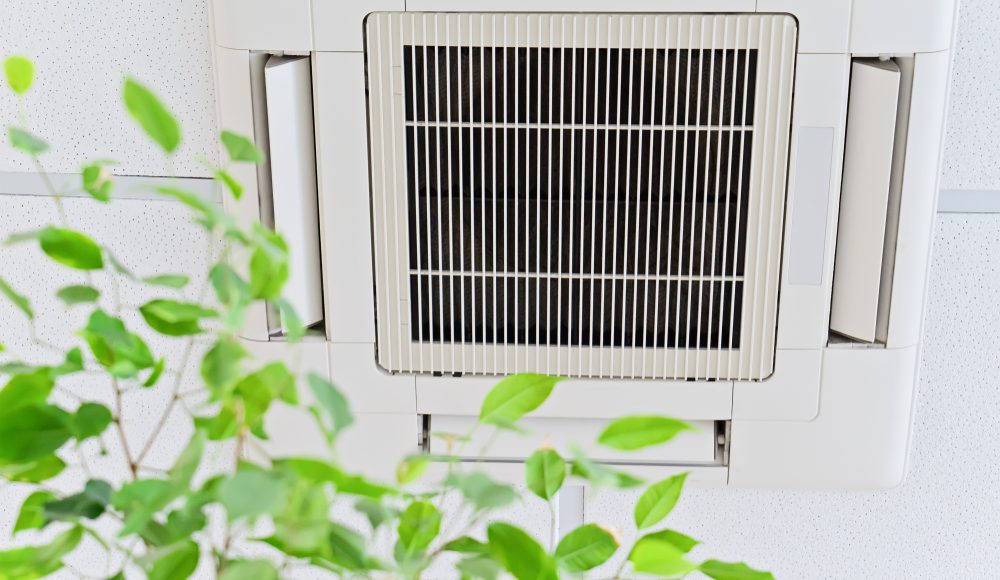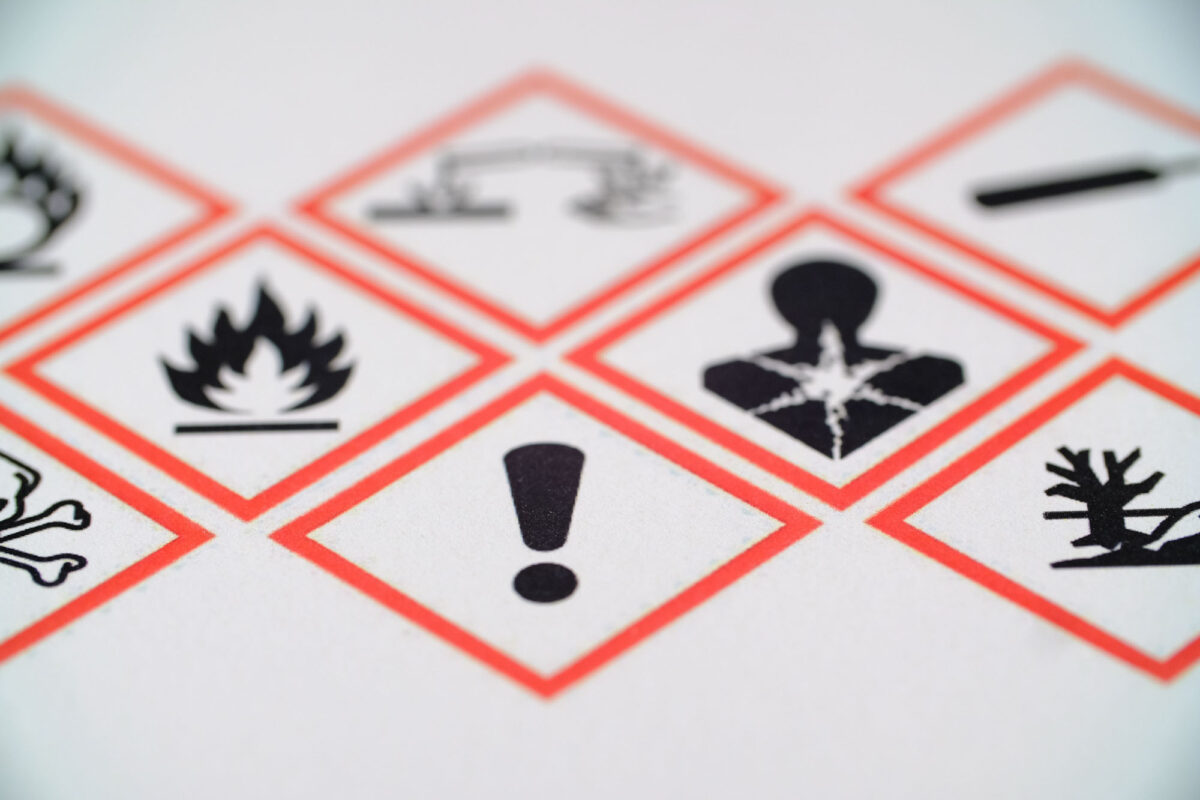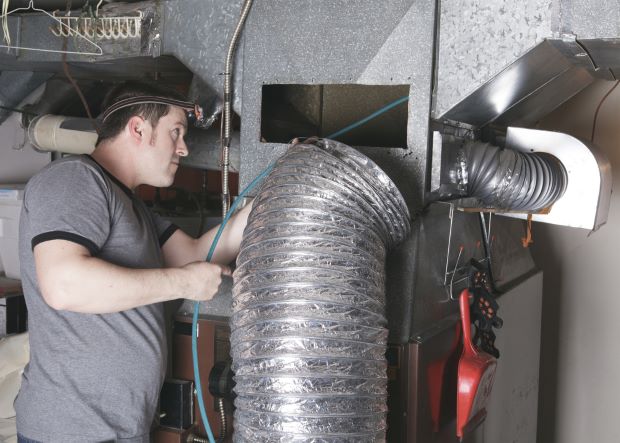Billowing industrial smoke and bumper-to-bumper traffic on interstate highways. These are some of the images in your mind thinking about air pollution.
But, what about air pollution within the home? Have you ever considered whether the air inside is safe or not?
Air pollution within the house can be as harmful as air pollution outside. Americans spend 87% of their time indoors so the air quality is something everyone needs to consider.
With some basic knowledge and better maintenance, you can take the requisite steps for improving the air quality today.
So, there is no need to panic.
1. Change to filter of your air conditioner
If you want the perfect temperature for your house throughout the year, then the HVAC equipment is the right solution for this. As it is cycling through all the air, it’s also filtering out the air pollutants. But after a while, the air filter of the ACs gets filled up and stops performing its functions. This not only affects your indoor air quality but also wears down the AC system and can lead to expensive repairs along the way. So ensure that you are changing the air filter. Regularly! It is essential if you are prone to allergies or living in a metropolitan area containing a greater level of pollution.
2. Keep in mind other air filters
The AC filter is not the only filter working toward maintaining clean air within your home. Ensure that you check the filters of other appliances at home. Inspect your kitchen vents, kitchen cabinets, washing machine, and clothes dryer and carry out the requisite maintenance. It is recommended that you clean and replace their filters after a few months. Air cleaners’ usefulness depends on how well they can collect the pollutants out of the indoor air and how much air can be drawn via filtering or cleaning the elements.
3. Check the air ducts
The air ducts within the house distribute cold and hot air inside your home, and they provide a comfortable living condition inside all rooms. You won’t have to stop and wonder how to stay warm or refreshed as the temperature will be ideal. But when these ducts are not installed or not maintained well, they can distribute contaminants from one room to another. Over some time, dander, dust, and mold get accumulated inside these ducts, reducing air quality. You can hire the services of a pro to ensure that ducts are circulating clean and fresh air.
4. Keep the carpets and rugs clean and have indoor plants
Carpets and rugs are responsible for more things than increasing the comfort levels of your home. They also act as air filters on their own by trapping dust particles within their fibers. You need to clean the rugs and carpets every week. They will continue to work for you by improving the air quality just by being clean. Plants are the natural air filters from nature. Having indoor plants can do wonders for enhancing your indoors’ air quality, and it also improves the home decor. You can use small plants such as lilies and ferns or larger trees such as palm trees for this purpose. You might even consider curating your very own medicinal herb garden. These are the best alternatives for pulling the contaminants out from the indoor air.
5. Control the humidity within the house
Humid conditions are responsible for breeding mold and mildew that can be responsible for developing medical issues such as asthma and allergies. Although it depends on where you are located, generally speaking, the hot summer months bring about humid conditions. You need to decrease the amount of moisture from the air and curb the mold’s growth by using dehumidifiers. You can find a range of humidifier options that may help maintain consistent humidity levels and develop comfortable living conditions inside the house.
6. Having better ventilation
Increasing the quantity of outdoor air coming inside the home will lower the collected air pollutants’ concentration.
Most domestic cooling and heating systems, such as forced-air heating systems, don’t bring in the fresh air inside the home mechanically. You need to open the doors and windows, operate the attic or opening fans when the weather allows it, and run the window air conditioner with an open vent control to improve the outdoor ventilation rate. The confined kitchen or bathroom fans that exhaust the indoor air outside remove the contaminants directly from a room where the fans are located. It also increases the outdoor air ventilation rate.
It is specifically more important to follow as many of these steps as possible, primarily when you have performed some short-term activities within the home that may generate a greater level of pollutants; for instance, heating by using kerosene heaters, painting, paint stripping, cooking, and engaging in hobby and maintenance activities such as soldering, sanding, and welding. It might be possible to opt for performing some of these activities outdoors if the weather allows it. New houses are beginning to feature many mechanical systems that bring in outdoor air inside the house. Many of these designs include heat recovery ventilators that are energy-efficient. They are also called air-to-air heat exchangers.
Shading and adequate ventilation make it possible to control the indoor temperature. Ventilation will also remove or dilute the concentration of indoor airborne pollutants generated from the indoor resources. It also reduces the level of contaminants and also improves IAQ or indoor air quality. Evaluate the extent of pollution carefully by using ventilation for lowering the indoor air pollutants where there are many outdoor sources of contaminants such as refuse or smoke close by. Introducing the outdoor air inside the house is one of the significant factors for promoting higher air quality. There are different ways in which the air might enter the home, such as:
- With natural ventilation through doors and winds.
- Using mechanical means such as outdoor air intake associated with ventilation, heating, and HVAC systems.
- By using infiltration, which is a process that allows outdoor airflow inside the house via joints, openings, and cracks on the ceiling, floors, walls, and around the doors and windows.
Infiltration occurs in all houses to a degree. Natural ventilation means air movement by using open doors and windows. If used correctly, natural ventilation may moderate the air temperature indoors when it is likely to get too hot inside the house that does not have air conditioning systems or due to the power outages and brownouts limits that make the air conditioning use next to impossible.
Natural ventilation is also capable of improving indoor air quality by decreasing indoor pollutants.
Some of the examples of using natural ventilation are:
- Using doors and windows.
- Using window shading by closing the blinds.
7. Use source control
Usually, a more effective way of improving indoor air quality is by eliminating the individual sources of pollution or reducing emissions. Bases such as those comprising asbestos may be enclosed or sealed, while others such as gas stoves may be adjusted for decreasing the number of emissions. In most cases, using source control is the most cost-efficient way to protect the indoor air quality rather than raising the ventilation level. That is because increasing the ventilation may add to the energy costs.
8. Using cooking vents
A lot of indoor air pollutants enter the house through the kitchen. The gas stoves in the kitchen release harmful contaminants such as nitrogen dioxide and carbon monoxide. Even all the electric burners produce these pollutants at lower levels and other particles that may get easily absorbed within the bloodstreams of human beings. Therefore, when you are doing your cooking, you need to ensure that you turn on the kitchen vents or open the windows to help filter out all the air.
Conclusion
Maintaining the indoor air quality by keeping the air inside pure and breathable needs preventive maintenance and due diligence. After following the steps above that can be followed in a DIY routine for reducing indoor air pollution, you may also want to get help from professionals. They will offer a range of plans for their services that may include AC filter replacement and more such things to keep the air clean. You will breathe easy knowing that the air within your house is safe and clean.
>>> GET THE BOOK TO DISCOVER MORE <<<









